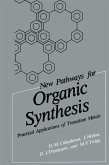Selective Oxidation by Heterogeneous Catalysis covers one of the major areas of industrial petrochemical production, outlining open questions and new opportunities. It gives keys for the interpretation and analysis of data and design of new catalysts and reactions, and provides guidelines for future research.
A distinctive feature of this book is the use of concept by example. Rather than reporting an overview of the literature results, the authors have selected some representative examples, the in-depth analysis of which makes it possible to clarify the fundamental, but new concepts necessary for a better understanding of the new opportunities in this field and the design of new catalysts or catalytic reactions. Attention is given not only to the catalyst itself, but also to the use of the catalyst inside the process, thus evidencing the relationship between catalyst design and engineering aspects of the process.
This book provides suggestions for new innovative directions of research and indications on how to reconsider the field of selective oxidation from different perspectives, outlining that is not a mature field of research, but that new important breakthroughs can be derived from fundamental and applied research. Suggestions are offered on how to use less conventional approaches in terms of both catalyst design and analysis of the data.
Hinweis: Dieser Artikel kann nur an eine deutsche Lieferadresse ausgeliefert werden.
A distinctive feature of this book is the use of concept by example. Rather than reporting an overview of the literature results, the authors have selected some representative examples, the in-depth analysis of which makes it possible to clarify the fundamental, but new concepts necessary for a better understanding of the new opportunities in this field and the design of new catalysts or catalytic reactions. Attention is given not only to the catalyst itself, but also to the use of the catalyst inside the process, thus evidencing the relationship between catalyst design and engineering aspects of the process.
This book provides suggestions for new innovative directions of research and indications on how to reconsider the field of selective oxidation from different perspectives, outlining that is not a mature field of research, but that new important breakthroughs can be derived from fundamental and applied research. Suggestions are offered on how to use less conventional approaches in terms of both catalyst design and analysis of the data.
Hinweis: Dieser Artikel kann nur an eine deutsche Lieferadresse ausgeliefert werden.
`The authors set out to accomplish two challenging goals in the writing of this book and they successfully accomplished both of them. Their first goal was to give examples of important, representative new catalytic oxidations and to consider them in a way that could lead to greater understanding of these reactions so that this insight might provide better design of catalytic oxidation processes. The second goal that the authors set out was to take a fresh look at long established ideas and concepts, to ascertain their limitations and, by so doing delineate guidelines for future research.
Although the authors state, early on, that their goal is not to provide a comprehensive review of new oxidation process technology, they do a fine job of doing just that. Almost all new, and many established heterogeneous catalytic oxidation process technologies are covered at some point in this volume. Along with some aspects of olefin epoxidation, aromatic hydroxylation and others, detailed descriptions of nearly all aspects of the heterogeneous catalytic oxidation and ammoxidation of alkanes, alkenes and alkyl aromatics are provided from many different points of view including the catalysts, reaction conditions, applications, process concepts, reactor design and mechanisms. The authors also highlight the enormous contributions made by catalytic oxidation technology to the chemical industry, noting that more than half the products made using catalytic processes and nearly all the monomers used for the production of fibers and plastics are obtained through selective oxidation.
I recommend it to all who are working in the field of catalysis, especially those in the area of catalytic oxidation or anyone who is contemplating entering this field. It will be a worthwhile addition to the library of those interested in catalytic oxidation, not only as a reference work full of important information, but as a stimulating compendiumof ideas that can focus one's approach on exciting new areas of oxidation catalysis in order to design new and useful chemical processes.
In conclusion, this volume is well written, informative, interesting, and thought provoking. It will be a valuable addition to the literature of heterogeneous catalytic oxidation.'
Dr. James E. Lyons in Cattech Journal, 5:2 (2001)
Although the authors state, early on, that their goal is not to provide a comprehensive review of new oxidation process technology, they do a fine job of doing just that. Almost all new, and many established heterogeneous catalytic oxidation process technologies are covered at some point in this volume. Along with some aspects of olefin epoxidation, aromatic hydroxylation and others, detailed descriptions of nearly all aspects of the heterogeneous catalytic oxidation and ammoxidation of alkanes, alkenes and alkyl aromatics are provided from many different points of view including the catalysts, reaction conditions, applications, process concepts, reactor design and mechanisms. The authors also highlight the enormous contributions made by catalytic oxidation technology to the chemical industry, noting that more than half the products made using catalytic processes and nearly all the monomers used for the production of fibers and plastics are obtained through selective oxidation.
I recommend it to all who are working in the field of catalysis, especially those in the area of catalytic oxidation or anyone who is contemplating entering this field. It will be a worthwhile addition to the library of those interested in catalytic oxidation, not only as a reference work full of important information, but as a stimulating compendiumof ideas that can focus one's approach on exciting new areas of oxidation catalysis in order to design new and useful chemical processes.
In conclusion, this volume is well written, informative, interesting, and thought provoking. It will be a valuable addition to the literature of heterogeneous catalytic oxidation.'
Dr. James E. Lyons in Cattech Journal, 5:2 (2001)
`The authors set out to accomplish two challenging goals in the writing of this book and they successfully accomplished both of them. Their first goal was to give examples of important, representative new catalytic oxidations and to consider them in a way that could lead to greater understanding of these reactions so that this insight might provide better design of catalytic oxidation processes. The second goal that the authors set out was to take a fresh look at long established ideas and concepts, to ascertain their limitations and, by so doing delineate guidelines for future research. Although the authors state, early on, that their goal is not to provide a comprehensive review of new oxidation process technology, they do a fine job of doing just that. Almost all new, and many established heterogeneous catalytic oxidation process technologies are covered at some point in this volume. Along with some aspects of olefin epoxidation, aromatic hydroxylation and others, detailed descriptions of nearly all aspects of the heterogeneous catalytic oxidation and ammoxidation of alkanes, alkenes and alkyl aromatics are provided from many different points of view including the catalysts, reaction conditions, applications, process concepts, reactor design and mechanisms. The authors also highlight the enormous contributions made by catalytic oxidation technology to the chemical industry, noting that more than half the products made using catalytic processes and nearly all the monomers used for the production of fibers and plastics are obtained through selective oxidation. I recommend it to all who are working in the field of catalysis, especially those in the area of catalytic oxidation or anyone who is contemplating entering this field. It will be a worthwhile addition to the library of those interested in catalytic oxidation, not only as a reference work full of important information, but as a stimulating compendium of ideas that can focus one's approach on exciting new areas of oxidation catalysis in order to design new and useful chemical processes. In conclusion, this volume is well written, informative, interesting, and thought provoking. It will be a valuable addition to the literature of heterogeneous catalytic oxidation.' Dr. James E. Lyons in Cattech Journal, 5:2 (2001)








